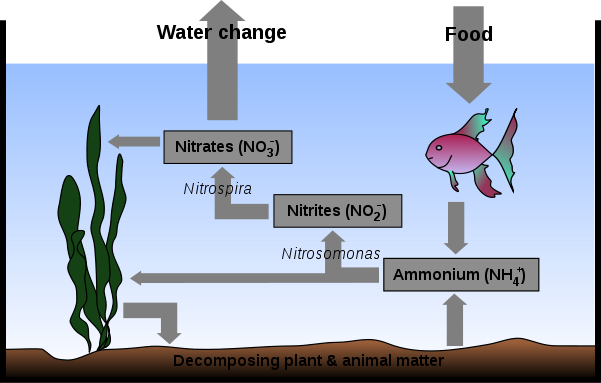Ammonia Spike
Ammonia spikes can occur quickly and kill your fish. These spikes have many different root causes, but the simple explanation for this is that your biological filtration cannot handle the amount of ammonia in your aquarium system.

Why Does The Water Always Test So High For Ammonia?
Your water should always test for zero ammonia once your aquarium has been cycled and established. This first deadly chemical in the Nitrogen Cycle can indicate several problems in your aquarium that you must address. Catching serious aquarium problems in the Ammonia Spike stage can reduce the chance of having further issues later on down the road.
Symptoms
- Water consistently tests high for ammonia
- Your aquarium water has turned brown or white
- Fish have purple or deep red gills
- Fish don't eat food when you give it to them
- Fish lay on the bottom of the tank and are generally lethargic
- Fish gasp for air at the surface of the water
- Red streaks appear on the body or fins of your fish
- Fish flash their bellies or rub their gills on the bottom of your aquarium
Cause: Biological Filtration Bacteria Cannot Handle the Amount of Ammonia in Your Aquarium
If your tank sustains an ammonia spike soon after you have filled it, then you may still be in the cycle process. But, if you have an established aquarium, this spike can be caused by a bacteria die off in your biological filtration, an excess bio-load of fish, an abundance of living or dead algae, to much time between maintenance and water changes, or over feeding.
Fix
- Reduce the amount of algae in your aquarium.
- Reduce the amount of food that you feed your fish by 1/2 to 1/3.
- Remove dead plants and leaves from your aquarium.
- Remove some fish from the aquarium to lessen the bio-load.
- Do a 50% water change and thoroughly vacuum the gravel.
- Add Bio-Stars or Bio-Balls to your filter system.
- Add Stress Zyme as labeled on the bottle to replace dead bacteria or aid in the growth of new bacteria.
- Lower your aquarium's pH below 7.0 using watter additives as labeled. Lower pH values make ammonia less toxic to fish.
- Use a chemical ammonia neutralizer as labeled on the bottle. This is a last resort or hold over option and is never a permanent fix. If you have to do this more than once, you probably have too many fish in your aquarium.
Ammonia levels should be returned to zero when your aquarium is healthy again. At 1 ppm (parts per million) ammonia begins to be toxic to fish and can cause a host of diseases. It may take several days to sort this issue out and don't be surprised if it is quickly followed by a Nitrite Spike.
For more information on Ammonia Spikes, go to Wikipedia's Ammonia Poisoning page.





